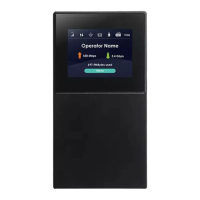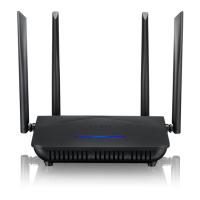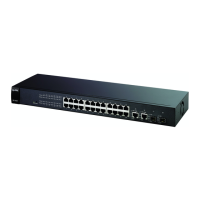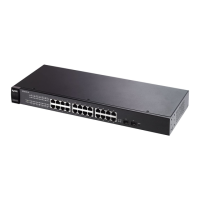Chapter 26 Cellular WAN Status
Nebula Mobile Router User’s Guide
270
Data Roaming This displays if data roaming is enabled on the Zyxel Device.
Data roaming is to use your Zyxel Device in an area which is not covered by your service
provider. Enable roaming to ensure that your Zyxel Device is kept connected to the Internet
when you are traveling outside the geographical coverage area of the network to which you
are registered.
Operator This displays the name of the service provider.
PLMN This displays the PLMN number.
Service Information
Access
Technology
This displays the type of the mobile network to which the Zyxel Device is connecting.
Band This displays the current cellular band of your Zyxel Device.
RSSI This displays the strength of the WiFi signal between an associated wireless station and an AP.
The normal range is –30dBm to –79dBm. If the value drops below –80dBm, try moving the
associated wireless station closer to the Zyxel Device to get better signal strength.
Cell ID This shows the cell ID, which is a unique number used to identify the Base Transceiver Station to
which the Zyxel Device is connecting.
The value depends on the Current Access Technology:
• For GPRS, it is the Cell Identity as specified in 3GPP-TS.25.331.
• For UMTS, it is the Cell Identity as defined in SIB3 3GPP-TS.25.331, 3GPP-TS.24.008.
• For LTE, it is the 28-bit binary number Cell Identity as specified in SIB1 in 3GPP-TS.36.331.
The value is ‘0’ (zero) or ‘N/A’ if there is no network connection.
Physical Cell ID This shows the Physical Cell ID (PCI), which are queries and replies between the Zyxel Device and
the mobile network it is connecting to. The normal range is 1 to 504.
UL Bandwidth
(MHz)
This shows the cellular channel bandwidth from the Zyxel Device to the base station. According
to 3GPP specifications, the bandwidths defined by the standard are 1.4, 3, 5, 10, 15, and 20 MHz.
The wider the bandwidth the higher the throughput.
DL Bandwidth
(MHz)
This shows the cellular channel bandwidth from the base station to the Zyxel Device. According
to 3GPP specifications, the bandwidths defined by the standard are 1.4, 3, 5, 10, 15, and 20 MHz.
The wider the bandwidth the higher the throughput.
RFCN This displays the Radio Frequency Channel Number of DL carrier frequency used by the mobile
network to which the Zyxel Device is connecting.
The value depends on the Current Access Technology:
• For GPRS, it is the ARFCN (Absolute Radio-Frequency Channel Number) as specified in 3GPP-
TS.45.005.
• For UMTS, it is the UARFCN (UTRA Absolute Radio-Frequency Channel Number) as specified in
3GPP-TS.25.101.
• For LTE, it is the EARFCN (E-UTRA Absolute Radio-Frequency Channel Number) as specified in
3GPP-TS.36.101.
The value is ‘0’ (zero) or ‘N/A’ if there is no network connection.
RSRP This displays the Reference Signal Receive Power (RSRP), which is the average received power
of all Resource Element (RE) that carry cell-specific Reference Signals (RS) within the specified
bandwidth.
The received RSRP level of the connected E-UTRA cell, in dBm, is as specified in 3GPP-TS.36.214.
The reporting range is specified in 3GPP-TS.36.133.
An undetectable signal is indicated by the lower limit, example –140 dBm.
This parameter is for LTE only. The normal range is –30 to –140. The value is –140 if the Current
Access Technology is not LTE. The value is ‘N/A’ if there is no network connection.
Table 116 System Monitor > Cellular WAN Status (continued)
LABEL DESCRIPTION
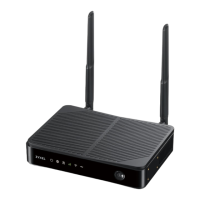
